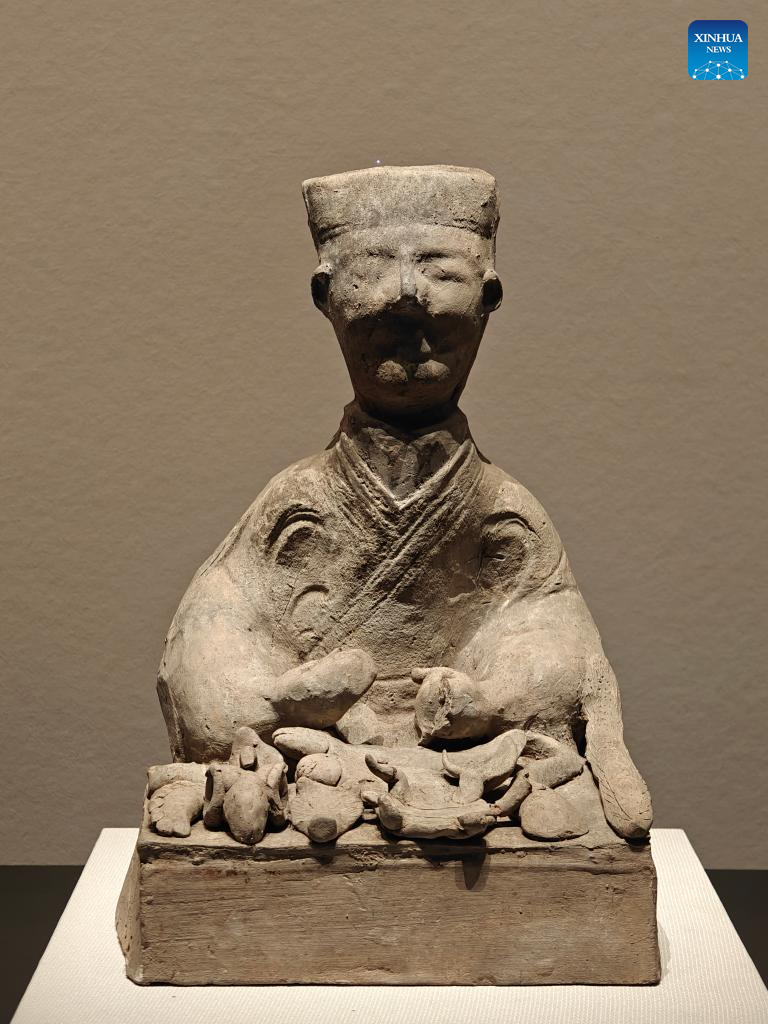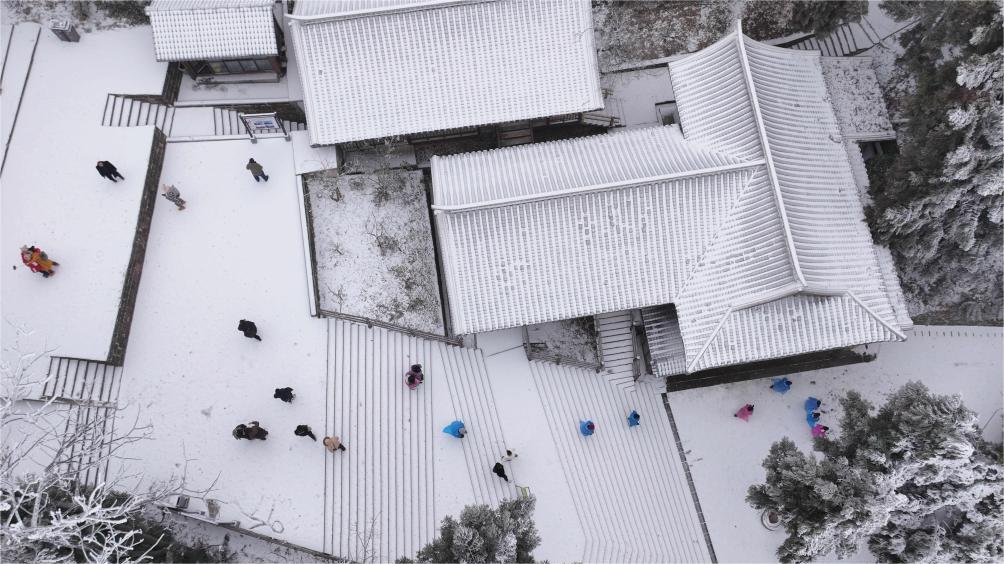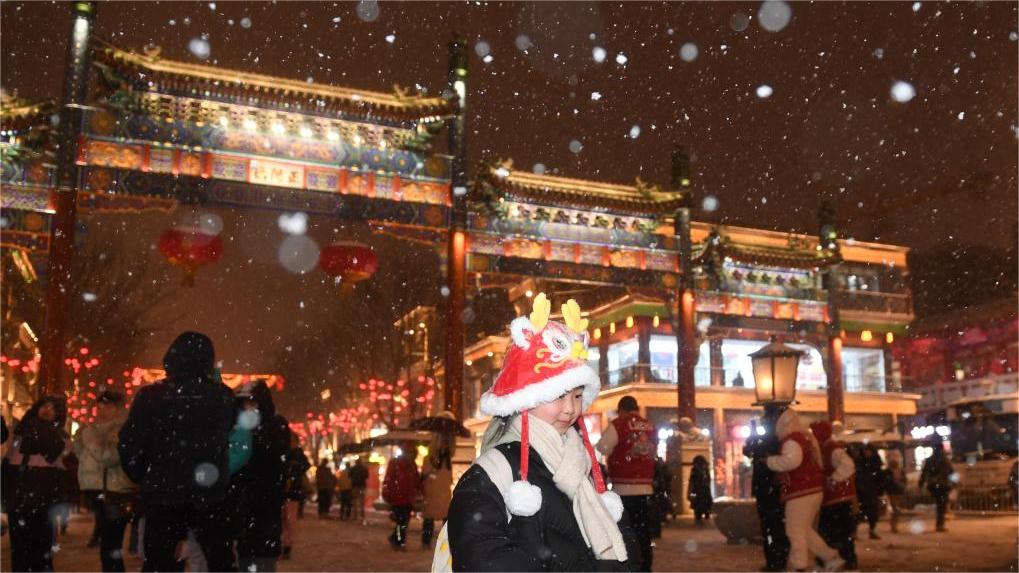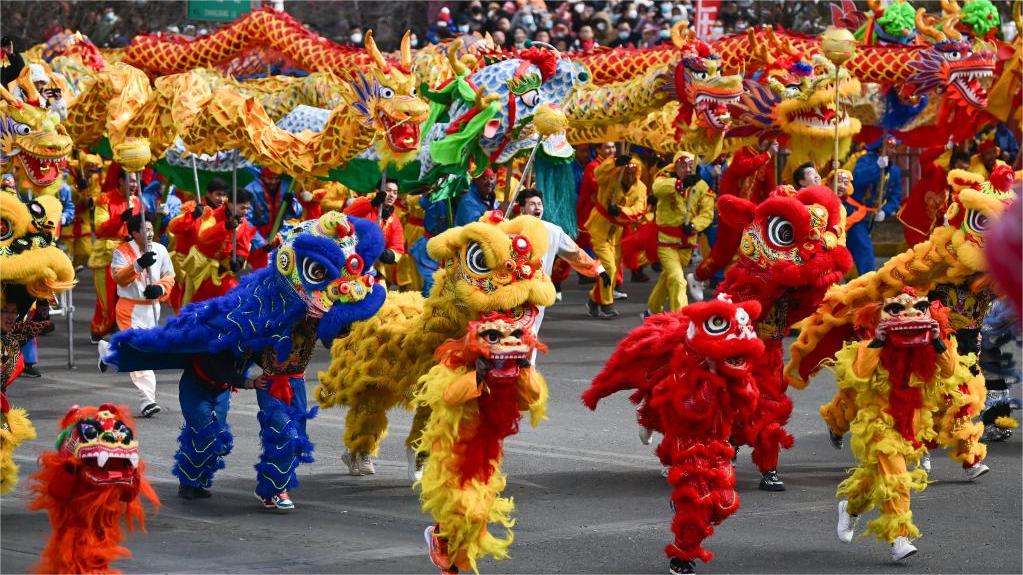Feature: China's history of dumplings, from archaeological finds to modern tables

This undated photo shows a chef figurine dating back to the Eastern Han and Three Kingdoms periods unearthed from a tomb in southwest China's Chongqing.(Sichuan Museum/Handout via Xinhua)
BEIJING, Feb. 24 (Xinhua) -- During the Spring Festival, Chinese families come together for a reunion. And dumplings, also known as jiaozi, usually play a central role in this tradition.
In the north, fillings like celery and chives do not just provide flavor but symbolize diligence and longevity. In the south, ingot-shaped egg dumplings and fried yau gok are known to carry people's hopes for a prosperous new year.
But despite the popularity of dumplings in China and around the world, their origins are not clear. Archaeologists in east China's Shandong Province told Xinhua that the earliest physical record of dumplings dates back approximately 2,500 years.
Tengzhou in Shandong, which is about an hour's drive from Qufu, the hometown of Confucius, was the capital of a small state called Xue during the Spring and Autumn period (770 B.C.-476 B.C.).
Wang Dongmei, deputy director of the archaeological research department at the Shandong Museum, said that during an archaeological project in 1978, archaeologists discovered a corroded, shut bronze container in the tomb of a Xue monarch who ruled about 2,500 years ago.
"After prying it open, we found yellow, triangular food items that were about 5 or 6 centimeters on their longer sides, resembling dumplings and covered in a layer of white powder that blew away with the wind. When we prodded them gently with a bamboo stick, they crumbled, revealing stuffing-like crumbs inside, but it was no longer possible to identify the filling," Wang said.
She noted that the tomb, which had been untouched by looters, housed a total of 28 bronze ritual vessels containing well-preserved cattle, sheep, chicken and fish bones.
"To my knowledge, no older dumplings have been found in Shandong or in any other region across the country. This suggests that dumplings, which are a unique part of Chinese culinary culture, likely originated in Shandong," said Hu Xinli, the lead archaeologist of the excavation.
Skipping forward to the Eastern Han period (25-220 A.D.) and the Three Kingdoms period (220-280 A.D.) and moving to the southwest of the country, and dumplings seem to have become an indispensable part of Chinese cuisine.
The Sichuan Museum houses a chef figurine dating back to the Eastern Han and Three Kingdoms periods that was unearthed from a tomb in Chongqing’s Zhong County. The chef's demeanor is relaxed, and there is a rich array of ingredients on the cutting board in front of him, as well as a clearly identifiable dumpling.
Wen Xiaohua, the curator of the Yunyang Museum in Chongqing, said that figurines of laborers and dancers from the same era commonly feature joyful expressions, reflecting an optimistic spirit, abundant vitality and a hopeful outlook.
Over 10 pottery figurines featuring dumplings have been discovered in Chongqing alone.
"In the Sichuan and Chongqing regions, a significant number of vivid chef figurines have been unearthed, dating back to the Eastern Han and Three Kingdoms periods, and ranging from 20 to 50 centimeters in height. There are typically rich varieties of ingredients on their cutting boards, and they generally have smiles on their faces, seemingly enjoying the cooking process," said Zuo Zhiqiang, an associate research fellow at the Chengdu Cultural Relics and Archaeology Research Institute.
Dumplings from over a thousand years ago have also been discovered in northwest China's Xinjiang.
"Due to the dry climate, well-preserved pastries and dumplings from the Tang Dynasty (618-907) have been excavated from the Astana Tombs in Turpan, Xinjiang. The dumplings closely resemble the ones commonly seen today in terms of size and shape," said Wang Renxiang, a research fellow at the Chinese Academy of Social Sciences' Institute of Archaeology,
Lu Lipeng, a research fellow at the Xinjiang Institute of Cultural Relics and Archaeology, said that approximately 20 Tang dumplings have been unearthed at Astana to date. Some tombs had been disturbed by tomb raiders, but the dumplings were often found in ceramic or wooden vessels next to the head of the tomb's occupant, making them difficult to access.
Reflecting on the 2,500-year history of dumplings across China, Wang Renxiang said that dumplings are simple to make and can have a variety of fillings to meet different taste preferences. The combination of convenience, taste and rich symbolism has facilitated their enduring presence through the generations.
"From the archaeological sites of the Spring and Autumn period to modern dining tables, dumplings carry the sentiment and cultural identity of the Chinese people, and symbolize their love for life and their anticipation for the future," said Hu.
He said that whenever the aroma of dumplings wafts through his home, his mind still floods with memories of his exhilarating discovery back in 1978.

This undated photo shows pastries and dumplings excavated from the Astana Tombs in Turpan, northwest China's Xinjiang Uygur Autonomous Region. (Xinjiang Institute of Cultural Relics and Archaeology/Handout via Xinhua)

This undated file photo shows triangular food items resembling dumplings in a bronze container excavated from the tomb of a Xue monarch who ruled about 2,500 years ago, in Tengzhou, east China's Shandong Province. (Shandong Museum/Handout via Xinhua)
Photos
Related Stories
Copyright © 2024 People's Daily Online. All Rights Reserved.









